Top Rankings
Rome City School District ranks among the top 20% of public school district in New York for:
Category
Attribute
Community Size
Largest student body (number of students) (Top 1%)
For the 2025 school year, there is 1 public middle school serving 827 students in Rome City School District. This district's average middle testing ranking is 1/10, which is in the bottom 50% of public middle schools in New York.
ÎÛÎÛÂþ» Middle School in Rome City School District have an average math proficiency score of 16% (versus the New York public middle school average of 40%), and reading proficiency score of 26% (versus the 51% statewide average).
Minority enrollment is 22% of the student body (majority Hispanic and Black), which is less than the New York public middle school average of 63% (majority Hispanic).
Overview
This School District
This State (NY)
# Schools
9 Schools
1,659 Schools
# Students
5,126 Students
890,054 Students
# Teachers
450 Teachers
83,739 Teachers
Student : Teacher Ratio
11:1
11:1
District Rank
Rome City School District, which is ranked #955 of all 1,015 school districts in New York (based off of combined math and reading proficiency testing data) for the 2021-2022 school year.
The school district's graduation rate of 74% has decreased from 79% over five school years.
Overall District Rank
#951 out of 1020 school districts
(Bottom 50%)
(Bottom 50%)
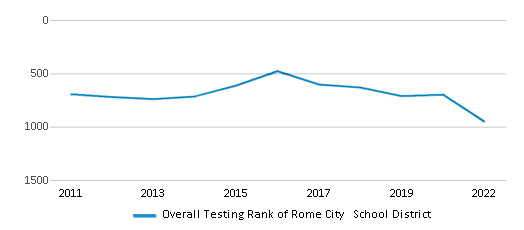
Math Test Scores (% Proficient)
27%
46%
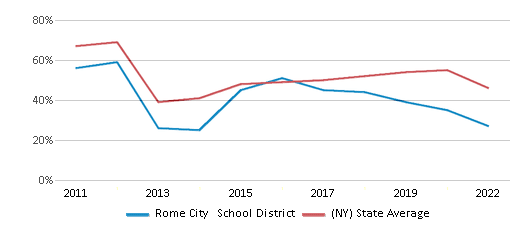
Reading/Language Arts Test Scores (% Proficient)
26%
49%
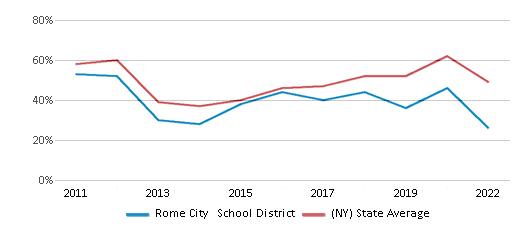
Science Test Scores (% Proficient)
71%
78%
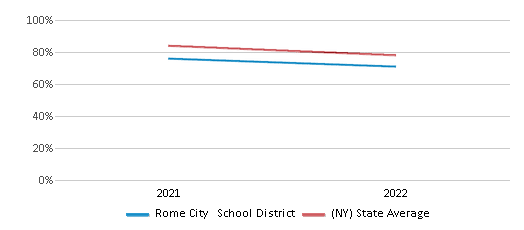
Graduation Rate
74%
87%
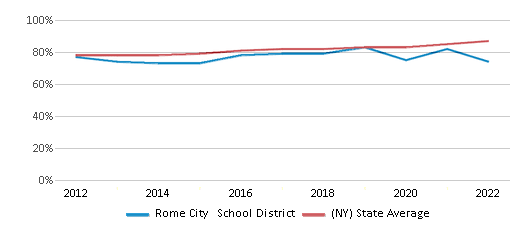
Students by Ethnicity:
Diversity Score
0.43
0.73
# American Indian Students
13 Students
7,222 Students
% American Indian Students
n/a
1%
# Asian Students
86 Students
81,213 Students
% Asian Students
2%
9%
# Hispanic Students
548 Students
270,400 Students
% Hispanic Students
11%
30%
# Black Students
384 Students
175,155 Students
% Black Students
7%
20%
# White Students
3,830 Students
325,608 Students
% White Students
75%
37%
# Hawaiian Students
4 Students
2,099 Students
% Hawaiian Students
n/a
n/a
# Two or more races Students
260 Students
28,478 Students
% of Two or more races Students
5%
3%
Students by Grade:
# Students in PK Grade:
110
8,468
# Students in K Grade:
361
26,528
# Students in 1st Grade:
402
28,304
# Students in 2nd Grade:
369
28,365
# Students in 3rd Grade:
364
27,931
# Students in 4th Grade:
402
29,265
# Students in 5th Grade:
393
43,975
# Students in 6th Grade:
392
157,405
# Students in 7th Grade:
428
185,375
# Students in 8th Grade:
377
188,665
# Students in 9th Grade:
416
40,472
# Students in 10th Grade:
356
36,147
# Students in 11th Grade:
374
33,448
# Students in 12th Grade:
333
33,009
# Ungraded Students:
49
22,697
District Revenue and Spending
The revenue/student of $24,267 in this school district is less than the state median of $31,307. The school district revenue/student has stayed relatively flat over four school years.
The school district's spending/student of $22,887 is less than the state median of $32,183. The school district spending/student has stayed relatively flat over four school years.
Total Revenue
$124 MM
$78,541 MM
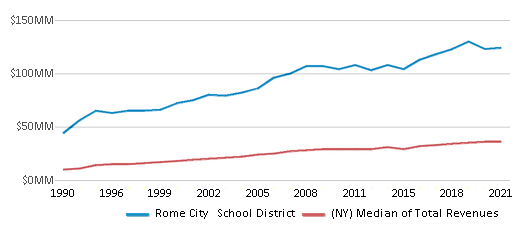
Spending
$117 MM
$80,737 MM
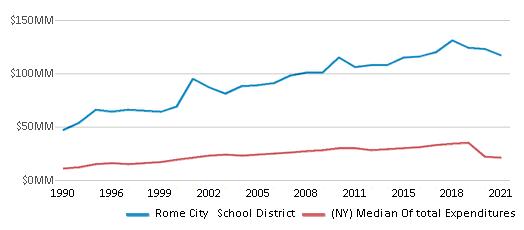
Revenue / Student
$24,267
$31,307
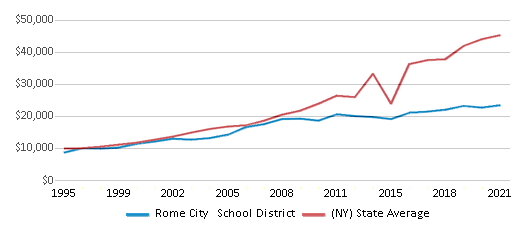
Spending / Student
$22,887
$32,183

Best Rome City School District ÎÛÎÛÂþ» Middle Schools (2025)
School
(Math and Reading Proficiency)
(Math and Reading Proficiency)
Location
Grades
Students
Rank: #11.
Lyndon H Strough Middle School
(Math: 16% | Reading: 26%)
Rank:
Rank:
1/
Bottom 50%10
801 Laurel St
Rome, NY 13440
(315) 338-5201
Rome, NY 13440
(315) 338-5201
Grades: 7-8
| 827 students
Recent Articles

Year-Round Or Traditional Schedule?
Which is more appropriate for your child? A year-round attendance schedule or traditional schedule? We look at the pros and cons.

Why You Should Encourage Your Child to Join a Sports Team
Participating in team sports has a great many benefits for children, there is no doubt. In this article you will learn what those benefits are.

White Students are Now the Minority in U.S. ÎÛÎÛÂþ» Schools
Increasing birth rates among immigrant families from Asia and Central and South America, combined with lower birth rates among white families, means that for the first time in history, public school students in the United States are majority-minority. This shift in demographics poses difficulties for schools as they work to accommodate children of varying language abilities and socio-economic backgrounds.





